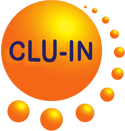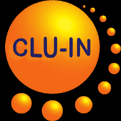Search Result from the April 2004 Issue
| Return to Search | Return to Results |
WOOD CADILLAC MINE TAILINGS: DESIGNING A BIOFILTER FOR ARSENIC CONTROLTasse, Normand (INRS-Eau, Terre et Environnement, Quebec); Denis Isabel (Experts Enviroconseil, Quebec); Rene Fontaine (Dessau-Soprin, Val d'Or, Quebec). Proceedings of the Sudbury 2003 Mining and the Environment Conference, 25-28 May 2003, Sudbury, ON, Canada. Laurentian Univ., Sudbury, ON, Canada. Centre for Environmental Monitoring, ISBN: 0-88667-051-9. 2 Vols or 2 CD-ROMs, 10 pp, 2003
The Wood Cadillac mine site in Northwestern Quebec features sulfide-poor
but As-rich tailings laid down between 1939 and 1949. A reducing biofilter was
planned for the passive treatment of As-contaminated seep and surface waters.
The As load is precipitated as As2S3 (orpiment). Various types of barks were
tested in water-saturated columns at different flow rates to determine the
efficiency and performance of wood wastes in the biofilter. Sulfate reduction
and As precipitation occurred with a removal often higher than 80%. The
precipitated solid was stable under acid leach down to pH 2. Barks from
deciduous trees performed better than conifer barks. Thirty-year-old wastes
were still reactive, but to a much smaller degree. As expected, performance
increased with residence time. The data allowed for the design and
implementation of a biofilter (50 m x 57 m x 1 m thick) with a vertical flow
and a residence time of 25 hours.
Available at
http://www.ott.wrcc.osmre.gov/library/proceed/sudbury2003/sudbury03/148.pdf
The Technology Innovation News Survey welcomes your comments and
suggestions, as well as information about errors for correction. Please
contact Michael Adam of the U.S. EPA Office of Superfund and Emergency Management at adam.michael@epa.gov or (703) 603-9915
with any comments, suggestions, or corrections.
Mention of non-EPA documents, presentations, or papers does not constitute a U.S. EPA endorsement of their contents, only an acknowledgment that they exist and may be relevant to the Technology Innovation News Survey audience.




